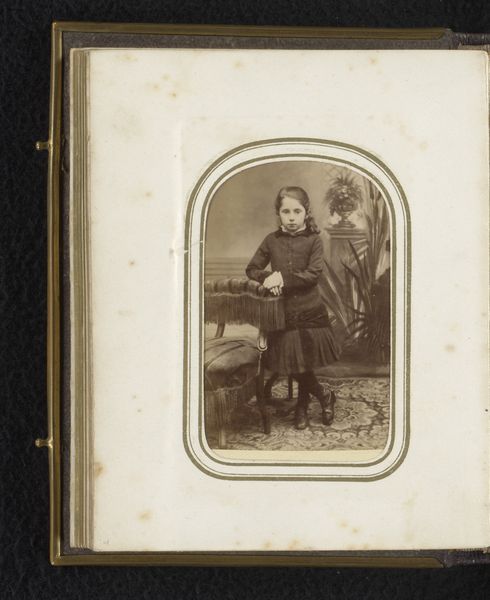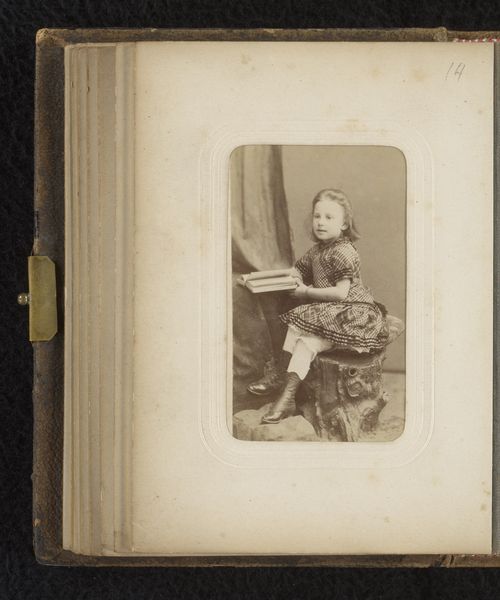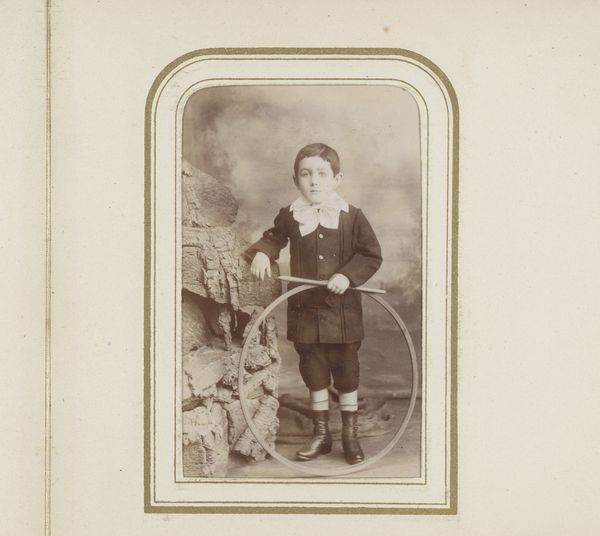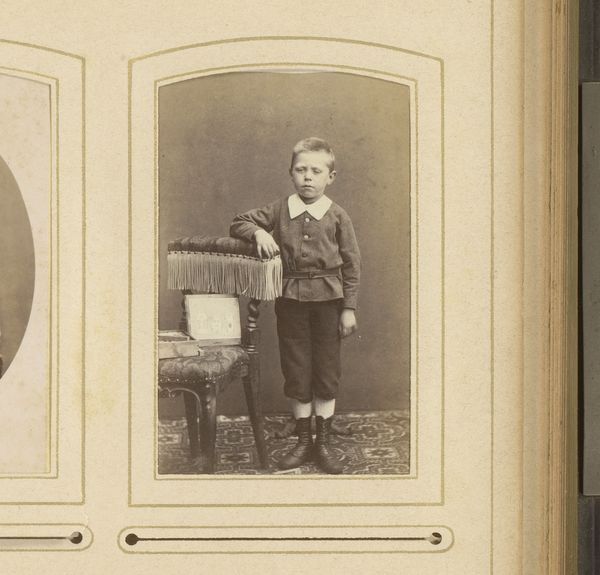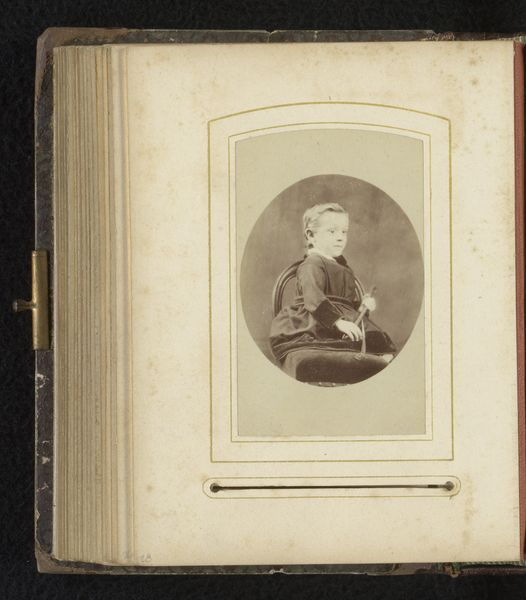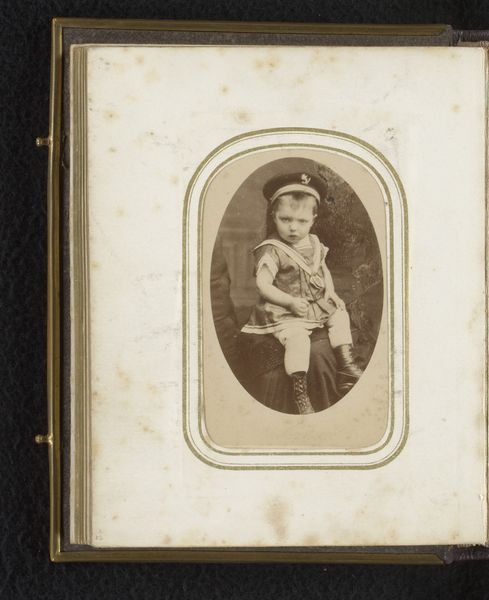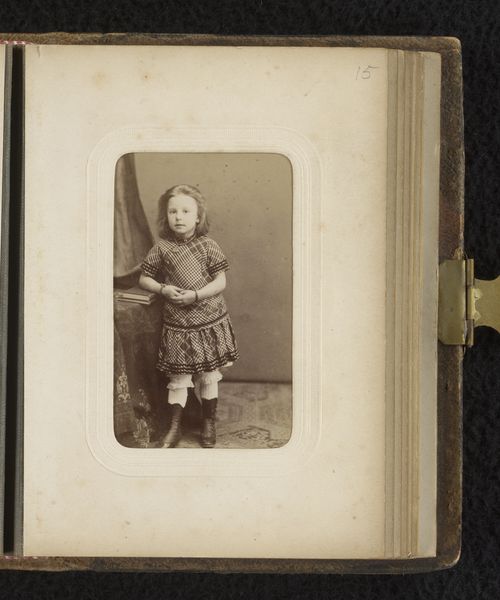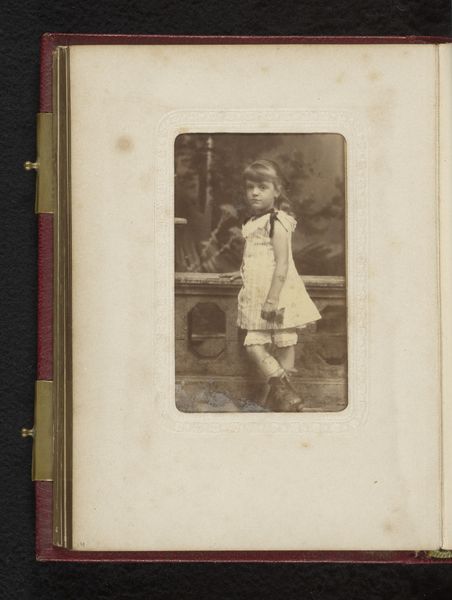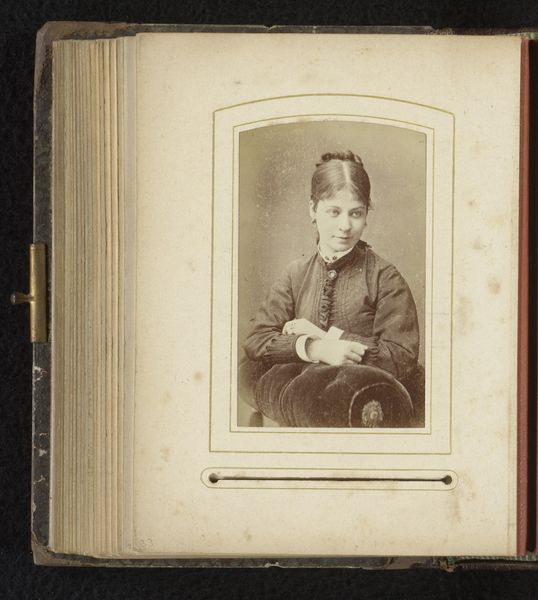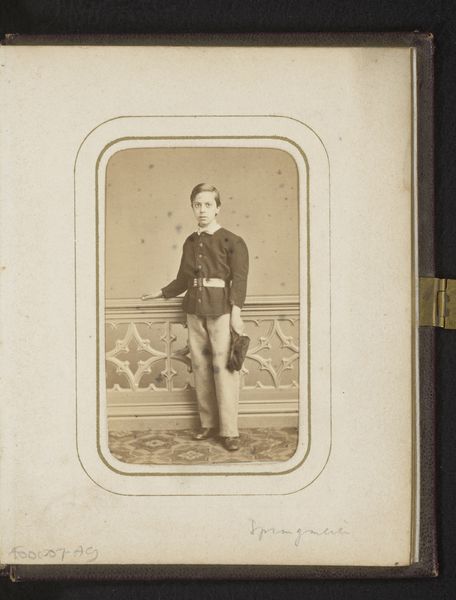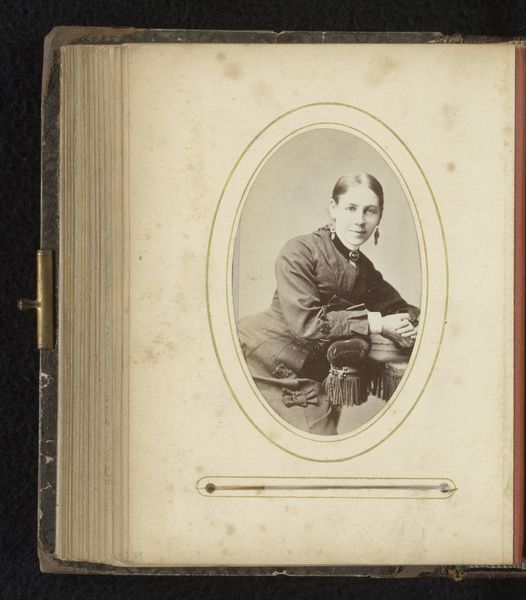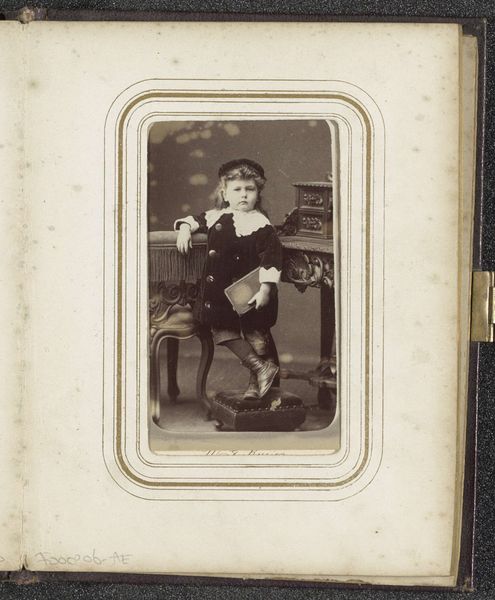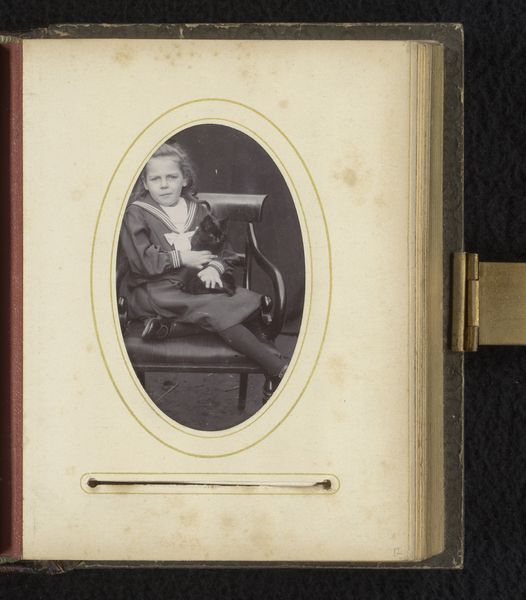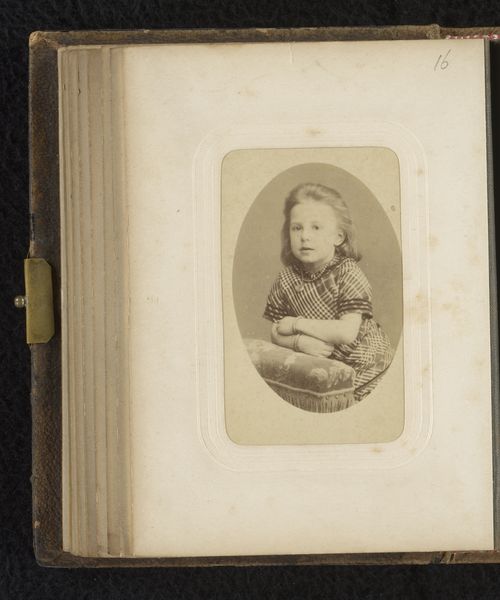
photography, albumen-print
#
portrait
#
photography
#
coloured pencil
#
albumen-print
Dimensions: height 103 mm, width 62 mm
Copyright: Rijks Museum: Open Domain
Curator: Looking at this evocative "Portret van een Meisje", or "Portrait of a Girl," created between 1870 and 1900, the first thing that strikes me is its sense of preserved intimacy. The albumen print, carefully placed within a photograph album, captures a specific moment in time. What’s your initial response? Editor: A touch of melancholy, definitely. The sepia tones combined with her somber gaze project an undeniable sense of loss and constraint, feelings quite familiar for young women of this era, I’d imagine. What kind of symbolism do you see in her posture or attire? Curator: It's fascinating to see how elements carry significance. Her elaborate hat could signify a kind of delicate status symbol within the frame. Her pose is also a little intriguing because we expect children to play more, and in many depictions during the period you would expect more motion, but here we instead have a fixed composition. The stillness perhaps communicates expectations around respectability and stillness required of young girls, that remains powerful over time. Editor: Yes, the rigid control imposed on girls is undeniable. Note the grip on her toy, likely the only agent of joy in the setting! It hints at suppressed expression within the structured domestic space, echoed through the contained, oval shape of the framing. Consider how gender roles and their implications within that structured space impacted childhood development. How did the photographic technology influence these messages? Curator: That is key here, since photographs such as this functioned differently than, say, portraits of a family in painting from previous generations. Early photography tended to represent things with "hyperrealism," because there was an illusionary quality, a verisimilitude effect that photographs communicated at the time, the ability to hold someone right there as they appeared when photographed. Here is, also, what appears like truth or reality now perceived with so much loss for childhood in the gilded age! Editor: That adds a layer of complication. We’re reminded that these portraits were rarely candid, and are instead constructed performances adhering to cultural norms. Even as the image attempts to capture authenticity, social expectations dictate every aspect. Curator: And in that paradox the emotional truth also can surface through time. It is as you mention – with the doll as emotional escape and that stare speaking through this "performance" about reality then versus memories today! Thank you for bringing such insightful depth to this dialogue! Editor: And thank you, that was indeed eye-opening about images as repositories of shared societal beliefs but also those individual truths contained within!
Comments
No comments
Be the first to comment and join the conversation on the ultimate creative platform.
